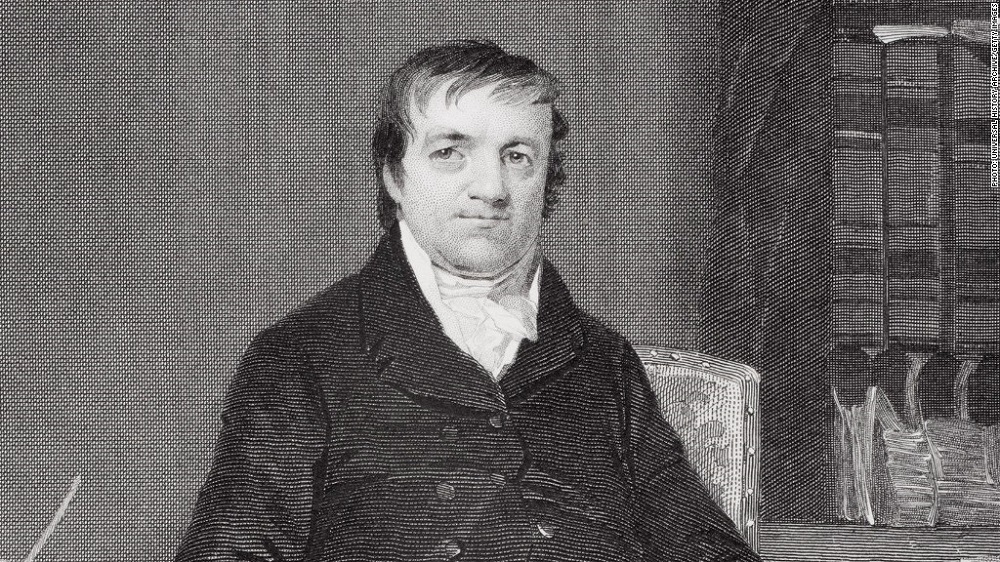Early life and family
John Jacob Astor was born in Walldorf, near Heidelberg in the old Palatinate. It became part of the Duchy of Baden in 1803 (now in Rhein-Neckar-Kreis in the state of Baden-Württemberg, Germany).
He was the youngest son of butcher Johann Jacob Astor (July 7, 1724 – April 18, 1816) and Maria Magdalena Vorfelder (1730–1766). His three elder brothers were George (born Georg) (April 28, 1752 – December 1813), Henry (born Heinrich) (1754–1833), and Melchior (1759–1829). Astor’s career began in Germany, where he worked as an assistant in his father’s business, as a dairy salesman. In 1779, at age 16, he moved to London, where he anglicized his name and learned English while working for his eldest brother George, manufacturing musical instruments.
Astor immigrated to New York City in the United States in March 1784, just after the end of the Revolutionary War. His second brother Henry had preceded him to New York, establishing a butcher shop with which Astor was initially involved. He began trading furs with Native Americans and in the late 1780s started a fur goods shop in New York City. He also became the New York agent of his brother’s musical instrument business.
Henry was also a horse racing enthusiast, and purchased a thoroughbred named Messenger, who had been shipped from England to the United States in 1788. The horse became the founding sire of the Standardbred breed in the US; it became the primary breed used for trotters and pacers
Marriage and family
On September 19, 1785, Astor married Sarah Cox Todd (1762–1834), the daughter of Scottish immigrants Adam Todd and Sarah Cox. Although she brought him a dowry of only $300, she possessed a frugal mind and a business judgment that he declared better than that of most merchants. She assisted him in the practical details of his business.
They had eight children:
– Magdalen Astor (1788–1832), who married Rev. John Bristed (1778–1855), mother of Charles Astor Bristed (1820–1874)
– Sarah Todd Astor (1790–1790), stillborn
– John Jacob Astor Jr. (1791–1869), sickly and mentally unstable
– William Backhouse Astor Sr. (1792–1875), who married Margaret Rebecca Armstrong (1800–1872); they had seven children including John Jacob Astor III (1822–1890) and William Backhouse Astor Jr. (1829–1892)
– Dorothea Astor (1795–1874)
– Henry Astor II (1797–1799), died in infancy
– Eliza Astor (1801–1838)
– unnamed son (1802–1802), died within a few days of being born
Fraternal organizations
Astor was a Freemason, and served as Master of Holland Lodge #8, New York City in 1788. Later he served as Grand Treasurer for the Grand Lodge of New York.
Fortune from fur trade:
Astor took advantage of the Jay Treaty between England and the United States in 1794, which opened new markets in Canada and the Great Lakes region. In London, Astor at once made a contract with the North West Company, who from Montreal rivaled the trade interests of the Hudson’s Bay Company, then based in London. Astor imported furs from Montreal to New York and shipped them to Europe. By 1800, he had amassed almost a quarter of a million dollars, and had become one of the leading figures in the fur trade. His agents worked throughout the western areas and were ruthless in competition. In 1800, following the example of the Empress of China, the first American trading vessel to China, Astor traded furs, teas, and sandalwood with Canton in China, and greatly benefited from it.
The U.S. Embargo Act in 1807, however, disrupted Astor’s import/export business because it closed off trade with Canada. With the permission of President Thomas Jefferson, Astor established the American Fur Company on April 6, 1808. He later formed subsidiaries: the Pacific Fur Company, and the Southwest Fur Company (in which Canadians had a part), in order to control fur trading in the Great Lakes areas and Columbia River region. His Columbia River trading post at Fort Astoria (established in April 1811) was the first United States community on the Pacific coast. He financed the overland Astor Expedition in 1810–12 to reach the outpost. Members of the expedition were to discover South Pass, through which hundreds of thousands of settlers on the Oregon, Mormon, and California trails passed through the Rocky Mountains.
Astor’s fur trading ventures were disrupted during the War of 1812, when the English captured his trading posts. In 1816, he joined the opium-smuggling trade. His American Fur Company purchased ten tons of Turkish opium, then shipped the contraband item to Canton on the packet ship Macedonian. Astor later left the China opium trade and sold solely to England.
Astor’s business rebounded in 1817 after the U.S. Congress passed a protectionist law that barred foreign fur traders from U.S. territories. The American Fur Company came to dominate trading in the area around the Great Lakes. In 1822, Astor established the Astor House on Mackinac Island as headquarters for the reorganized American Fur Company, making the island a metropolis of the fur trade. A lengthy description based on documents, diaries, etc. was given by Washington Irving in his travelogue Astoria. Astor’s commercial connections extended over the entire globe, and his ships were found in every sea.
Real estate and retirement:
Astor began buying land in New York in 1799 and acquired sizable holdings along the waterfront. After the start of the 19th century, flush with China trade profits, he became more systematic, ambitious, and calculating by investing in New York real estate. In 1803, he bought a 70-acre farm that ran west of Broadway to the Hudson River between 42nd and 46th streets. That same year, and the following year, he bought considerable holdings from the disgraced Aaron Burr.
In the 1830s, Astor foresaw that the next big boom would be the build-up of New York, which would soon emerge as one of the world’s greatest cities. Astor withdrew from the American Fur Company, as well as all his other ventures, and used the money to buy and develop large tracts of Manhattan real estate. Astor correctly predicted New York’s rapid growth northward on Manhattan Island, and he purchased more and more land beyond the then-existing city limits. Astor rarely built on his land, and leased it to others for rent and their use. After retiring from his business, Astor spent the rest of his life as a patron of culture. He supported the ornithologist John James Audubon in his studies, art work and travels, and the presidential campaign of Henry Clay.
Last will and legacy:
At the time of his death in 1848, Astor was the wealthiest person in the United States, leaving an estate estimated to be worth at least $20 million. His estimated net worth, if calculated as a fraction of the U.S. gross domestic product at the time, would have been equivalent to $110.1 billion in 2006 U.S. dollars, making him the fifth-richest person in American history. An estimate based on inflation from the legally-set American gold standard rate of $21 per ounce in the 1850s would result in a much more conservative net worth of $1.272 billion in 2011 dollars.
In his will, Astor bequeathed $400,000 to build the Astor Library for the New York public (later consolidated with other libraries to form New York Public Library), and $50,000 for a poorhouse and orphanage in his German hometown of Walldorf. The Astorhaus is now operated as a museum honoring Astor and serves as a renowned fest hall for marriages. Astor donated $25,000 to the German Society of the City of New York, whose chairman he was from 1837 until 1841. Also, he bequeathed $30,000 for a professor’s chair in German literature at Columbia University, but due to differences he had with the deanship, he erased this donation from the testament.
Astor left the bulk of his fortune to his second son William, because his eldest son, John Jr., was sickly and mentally unstable. Astor left enough money to care for John Jr. for the rest of his life. Astor is buried in Trinity Church Cemetery in Manhattan, New York. Many members of his family had joined its congregation but Astor remained a member of the local German Reformed congregation to his death. Herman Melville used Astor as a symbol of men who made the earliest fortunes in New York in his novella, Bartleby, the Scrivener.
The pair of marble lions that sit by the entrance of the New York Public Library at Fifth Avenue and 42nd Street were originally named Leo Astor and Leo Lenox, after Astor and James Lenox, who founded the library from his own collection. Next, they were called Lord Astor and Lady Lenox (both lions are males). Mayor Fiorello La Guardia renamed them “Patience” and “Fortitude” during the Great Depression.
In 1908, when the association football club FC Astoria Walldorf was formed in Astor’s birthplace in Germany, the group added “Astoria” to its name in his, and the family’s, honor.
Source: Wiki





























